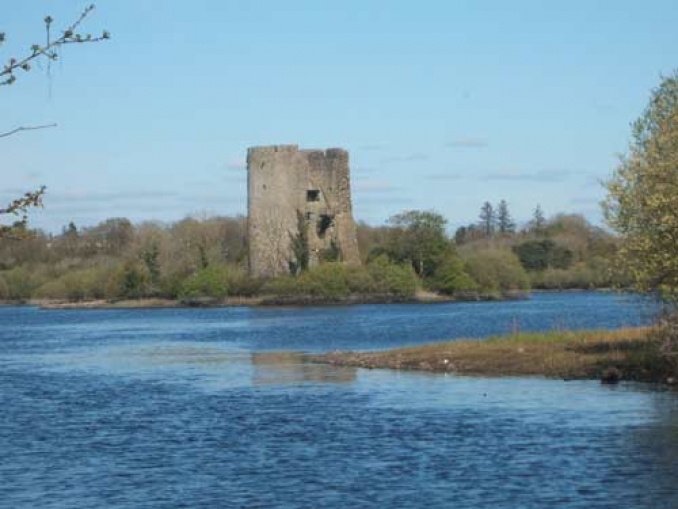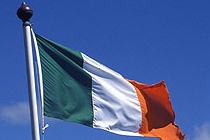Cloughoughter Castle - Cloch Locha Uachtair

Cloughoughter Castle (Irish: Cloch Locha Uachtair) is a ruined circular castle on a small island in Lough Oughter (Irish: Loch Uachtair). It is about 4 kilometres (2.5 mi) east of the village of Killeshandra (Irish: Cill na Seanrátha) in County Cavan, Ireland (Irish: Contae an Chabháin, Éire). It is thought that construction of the castle began in the early 13th century. However, it has been suggested that the prior to this the site could have been a crannóg, which is an artificially created island. There are a number of examples of such crannogs, which are a type of ancient loch-dwelling, in Scotland and Ireland. So it is possible there was a fortification on this site, possibly as early as the sixth century.
The castle in 1233, was in the possession of the O'Reilly clan and remained with them for a number centuries. Following land confiscations subsequent to the Plantation of Ulster, which was the organised colonisation of parts of Ireland by people from Britain, the castle changed hands. In 1610, Cloughoughter was handed over to Captain Hugh Culme. The castle was seized back in 1641 by Philip O'Reilly. He was MP for Cavan and a prominent leader of the Irish Rebellion of 1641 and for a period of time it was used as a prison. Philip O'Reilly kept control of the castle until 1653.
In March 1653, it was besieged by Commonwealth forces, but it held out until forced to surrender on 27th April 1653. It was the last major Confederacy position to surrender on 27 April 1653. Confederate Ireland was the period of Irish Catholic self-government between 1642–1652. The damage caused to Cloughoughter artillery fire prior to its surrender remains to this day. It has remained in ruins although some restoration work was since been undertaken. It continues to be an impressive site and is noted for its commanding presence in the beautiful setting of Lough Oughter. The castle is only accessible by boat.
Link and Image: Cavan County Museum imafe courtesy of their website.
Celtic nation:
- Ireland
Itinerary:
- Ireland Ulster southeast
Place type:
- Castle





